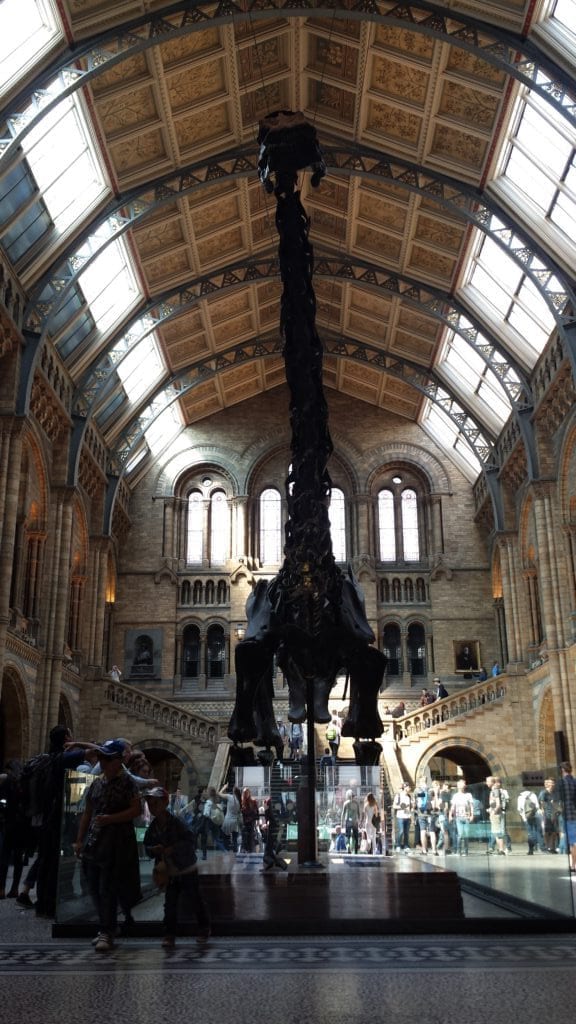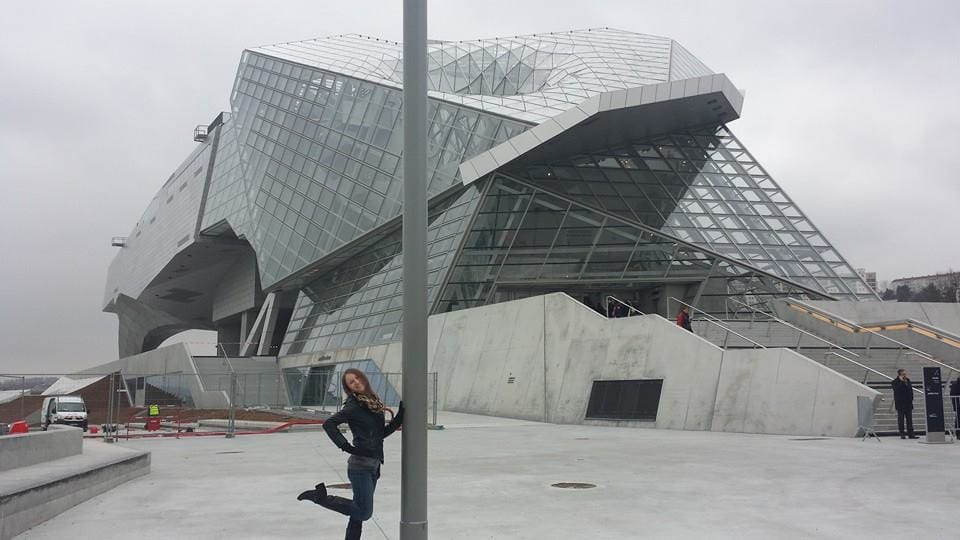When I visited the Science Museum in London, England, during the summer of 2016, I just walked right in—right past the reception desk—without paying. I suddenly found myself standing in the entrance hall, face to face with a giant glowing model of the Earth hanging from the ceiling. I looked around amazed that I was already in the exhibit hall and thought that I must have just accidentally snuck into the place illegally.
Being the good citizen that I am, I retraced my path to the front desk to ask whether there was an entrance fee. The smiling young man let me know that there was not. What? How splendid not to have to pay! I had heard that museums in Europe were cheaper than those in Canada but had never experienced it firsthand.

Planet Science in the Exploring Space gallery at the Science Museum © Science Museum Group
So what happens when science centres have lower entrance fees? Well, what happened to me is that I visited many more than I otherwise would have. I was on a tight budget, on the hunt for fun activities, and loved science. Perfect! That summer I also visited the Natural History Museum in London, then in France the Cité des Sciences et de l’Industrie in Paris and the Musée des Confluences in Lyon, and in Spain the Science Museum in Valencia and the CosmoCaixa Science Museum in Barcelona. Some I even visited more than once!
Not all of them were free but they were much cheaper than what I would have paid for similar museums in Canada. The most I paid was at the Science Museum in Paris—about $17 Canadian dollars. And that was the full adult price and considered to be quite expensive.
My experience got me thinking about financial accessibility and informal science learning in Canada and Europe. Since the price of a museum ticket is likely a barrier for many people, have European science museums overcome this with their lower entrance fees and are they now enjoying a wider slice of society in their museums?
The answer is sadly not a simple yes. Digging into the literature, I learned that visitors to science museums tend to have middle-class and ethnically dominant backgrounds and live in cities. Though there is not a lot of information out there about which specific groups don’t visit science centres and exactly why, a study inferred that people with low-income backgrounds, minority ethnic backgrounds, and those living in small towns may be less likely to visit science museums.
Based on this information, many European governments have subsidized science museums, making entrance fees lower for all visitors. The UK government for example, subsidized some museums back in the 1990s, making entrance to them completely free. The Natural History Museum and the Science Museum were on the list and continue to be free to this day. What happened when entrance fees disappeared? There was a huge spike in the number of visitors.
Analyzing the profiles of these people, however, showed that there weren’t really any new visitors and therefore no increase in diversity. It seemed existing visitors just went more often, kind of like I did when I was traveling through Europe. This actually makes a lot of sense—the kinds of people that like going to science centres would obviously go more often if it’s cheaper.
Why didn’t new people start coming as well though, especially the ones from lower economic backgrounds? Dr. Emily Dawson, Associate Professor at the University College London, in her 2014 publication, addressed this question.

The Natural History Museum in London, England. (Photo | Jenny Kliever)
She worked over the course of a year with groups from underprivileged backgrounds living in central London. During initial focus groups, she found that participants felt disinterested, anxious, and/or confused about science museums. Issues like cost, location, and lack of information did come up, but more importantly there was a very obvious sense of exclusion and alienation from the kinds of crowds that are perceived to go to science centres. Participants explained that going to a science centre is completely out of the question for them. One person said:
“If you ask me, ‘Fatimata are you going to come down [to a science centre],’ I’ll tell you ‘No, there’s not going to be anyone like me there, what’s wrong with you’(laughter from Fatimata and group), but that’s my perception of how I think about things.”
Most study participants were found to not know much about science centres in general and thought of them as another tourist attraction like the London Eye or the London Dungeon—places they saw as very expensive and of little value. According to the study, most people had no idea that going to science museums in London was free.
Simply removing entrance fees clearly was not enough to attract new profiles, and I would assume that the trend may be similar in most countries. To truly bring new people into science museums, targeted programs and new types of exhibits would need to be combined with lower entrance fees in order to make a real difference.
These kinds of programs already exist in some science museums. Science North in Sudbury, Ontario for example has a dedicated outreach program called Science En Route that travels to towns, communities, festivals, and fairs in Northern Canada with portable hands-on activities and teams of scientists. They especially focus on First Nations communities who are not able to visit the science centre directly. The program has been running since 2007 and already involves 25 different communities.
Ultimately, my summer of running around Europe and visiting as many science centres as I could taught me that financial accessibility is a beautiful thing for someone like me who is a “science insider”. It also made me reflect on the fact that many people consider themselves “science outsiders” and don’t feel welcome in the science museum setting regardless of the fact that entrance fees are low or zero. I do think it is a huge step forward to have highly subsidized science museums though and believe that the Canadian government and Canadian science museums should explore this model. At the same time, I realized that getting rid of ticket costs alone is not the magical solution I romanticized it to be on that exciting summer’s day at the London Science Museum. More intricate and strategic actions are needed to make a real difference.

Jenny Kliever outside the Musée des Confluences in Lyon, France. (Photo | Jenny Kliever)




